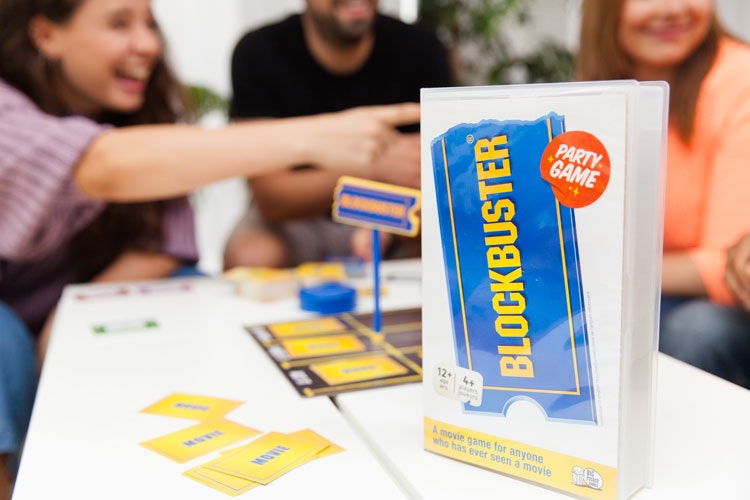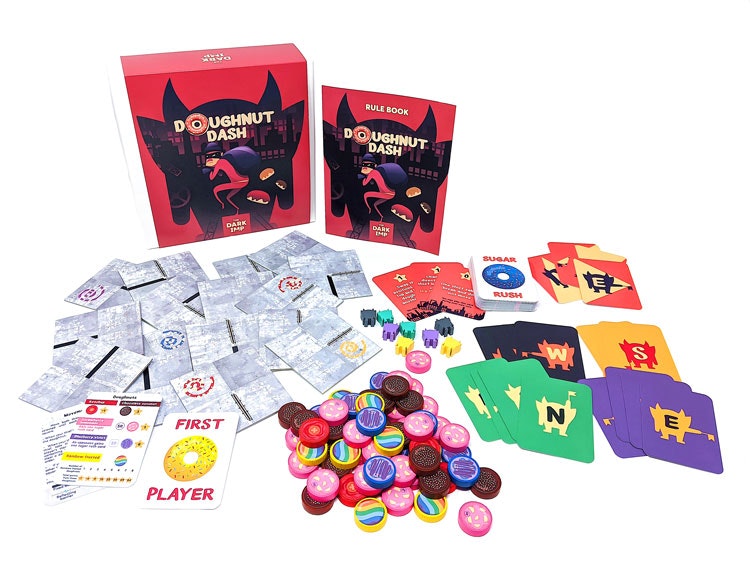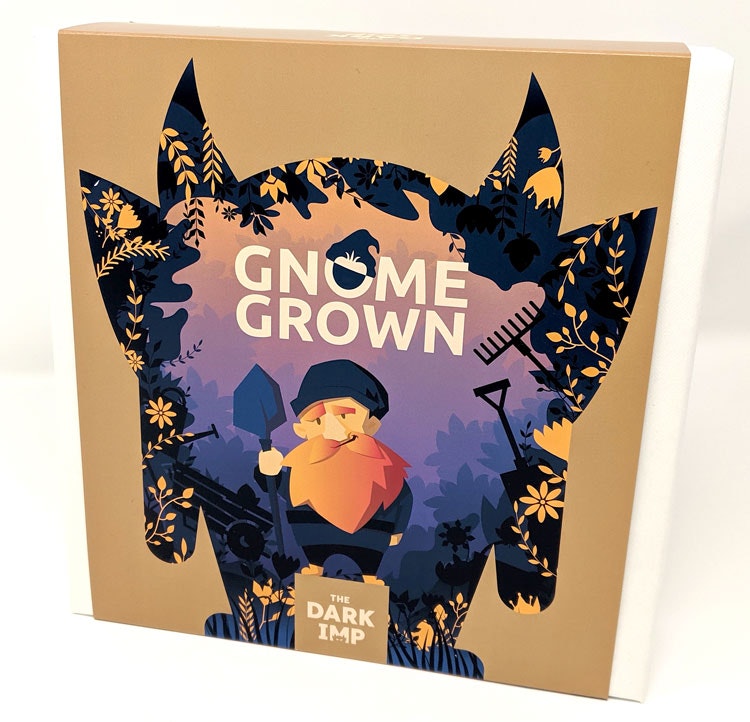In the week ending 21 March 2020, sales of board games were up 240% in the UK, compared to the same week in 2019.
This surge in popularity coincided with a country preparing for quarantine – prime minister Boris Johnson announced stricter lockdown measures just days later on 23 March. Faced with the growing suspicion that the decision was imminent, it seems many Brits turned to more low-tech forms of entertainment in preparation.
But as many fans will tell you, board games were enjoying a boost in popularity long before COVID-19 hit, and have long held the attention of designers, whether that’s Pentagram’s Angus Hyland, the graphic design students behind the Period Game or the professional readers of Design Week.
“Ask anyone in the industry and they’ll say we are in a golden age of board game design,” says Jonathan Hicks, founder and lead designer at board game publisher Maven Games. “Sales have been growing steadily year on year for some time now.”
According to Hicks, the reason behind this is simple: “It’s the same reason why video games are so much better now – we’ve got better technology and a better understanding of what is fun to play.”

The downfall of traditional “roll and move” board games
With a sounder understanding of the craft, the board game industry has diversified and developed into a market worth around $7.2 billion (around £5.7 billion) worldwide. But with more options available than ever, Hicks says there are still just two main ways that modern board game designers approach the task of creating new products.
The first sees designers work foremost with a theme, building gameplay, boards and pieces to fit the story. This happens in particular with games made from popular films, books or series. The second involves designers building a story around game mechanics.
“Modern games are generally much better at incorporating interesting mechanics,” he says. “The traditional ‘roll and move’ mechanic, like you’d see in Monopoly for example, is hackneyed and old-fashioned and designers are definitely moving beyond that.”
With an emphasis on interesting ways to play games, Hicks says the mark of a good game is the “quality of the choices” that designers given players. Having to make decisions and work with others around the board presents a more engaging experience, he says.

Complexity vs. wide appeal
But in wanting to innovate gameplay, designers are faced with a choice between complexity and wider appeal. For “heavier” offerings, Hicks explains, it can take players anywhere up to 45 minutes just to learn the rules, and another two or three hours to play the game.
This is understandably daunting for new players, he says, which is why games tend to be designed with attention paid to their “weight” – light, medium or heavy. As a lifelong fan of board games, Hicks confesses he is a fan of heavier games. But for those aren’t, the industry has developed alternatives.
Becky McKinlay works at Big Potato Games, one of the UK’s most prolific “party game” publishers. She explains that the audience for this kind of tabletop game experience is vastly different to those looking for something heavier and that designers adjust accordingly to these expectations.
“When someone buys a party game, they’re not looking for a 3-hour, multi-layered game experience,” she says. “They’re looking for a game they can learn quickly, play for as long as they want, and have a few laughs while they’re doing it.”
Bearing this in mind, she says Big Potato games are designed with simple rules, but enough variability so players can have different experiences with the same game. And where heavier board games often come with more intricate illustrations and pieces, party-style games are intended to be easily digestible, often relying more on bold, colourful design and pop culture themes.
“When you put a game in from of [people] that doesn’t look threatening and has an easy-to-learn rulebook, you can make the experience a lot less scary,” she adds.

The catalyst no one expected
Be it the popular party game Cards Against Humanity or the “cooperative horror game experience” Kingdom Death: Monster, it is impossible to speak about the modern board game industry without acknowledging the impact of crowdfunding platform Kickstarter.
An undeniable catalyst for the state of the industry today, some popular prospective titles on Kickstarter can attract multi-million-pound investments from those who like the look of what’s on offer.
“It was something people didn’t really expect, but some games just aren’t commercially viable in the traditional sense, but do really well on Kickstarter,” he says, giving examples of games with hundreds of pieces, which can be both expensive to buy and sell and simply too large sometimes to put on a store shelf.
“But now, it isn’t just indie publishers that rely on Kickstarter, but plenty of the bigger companies too,” says Hicks. And it is this practice, he says, that has boosted the standard of quality of modern board games throughout the industry.
Through stretch goals – the milestones put in place by creators once the initial funding target has been reached – Hicks explains that board game designers are able to refine their offering, without laying out money beforehand.
“Designers advertise that if they reach a stretch goal, they will use the money to add in new figurines, or up the grade of materials, and interested people pledge because of it,” he says. “As a result, the quality of miniatures, dice, cards and games themselves is higher throughout the industry, even if products haven’t been crowdfunded, because of the benchmark set by Kickstarter games.”

The psychology of board games
In all areas of the industry, board games are enjoying a boost. As to why that is, especially when so many other forms of entertainment are geared toward digital, is all to do with a “shift in social attitudes” that is increasingly seeing people reject tech in social spaces, according to McKinlay.
This idea is echoed by board game designer Ellie Dix, who is also director of The Dark Imp, an organisation that looks to reconnect families through gaming.
Dix is a lifelong fan of board games, but came into the industry in a professional capacity after a career in education – and she rates highly the impact that board games can have on individuals’ ability to socialise.
“The psychology of it is simple enough: when you play, you don’t have to talk about anything other than what is going on within the limits of the game,” she says. “And that takes the pressure off people who struggle with socialising.”
And where the rules, story and mechanics can help establish a mental realm in which to play, Dix says the tactility of pieces, cards, boards and figurines helps create a physical connection to the game at hand and the people involved.
“I’m sure that the vast majority of people would never want to be without the wealth of technology that we have access to today,” she says. “But at some point, many become tired of screens and the world of the internet – and board games can be a real solution to that.”


- Design disciplines in this article
- Industries in this article
- Brands in this article









One response to ““We’re in a golden age of design”: The enduring appeal of board games”
As a long time fan of board games, there’s always been one major barrier to table-top gaming: the high price! It can be a big decision to shell out quite a lot of money for a game that you’ve never played before. Under lockdown, I’ve been impressed and excited to see a number of new and established games-makers putting out online or ‘print & play’ versions of their games : a fantastic way to get a taster for a game before investing in the full kit. Long may it continue!